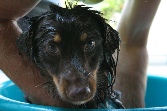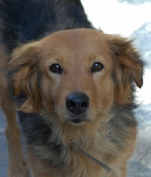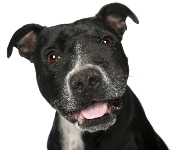Soft Tissue Sarcoma
These are a group of tumours that all form from connective tissue. They therefore can have lots of names but the most common is fibrosarcoma. Benign tumours are uncommon and end in –oma rather than –sarcoma (e.g. fibroma, not fibrosarcoma). They all behave the same, which is that they invade deeply and invisibly into tissue so are best surgically removed with a lot of normal looking tissue around them. There are 3 grades that a biopsy will determine. Most grade I and grade II tumours don’t spread elsewhere. Around half the grade III tumours will have spread – usually by blood to major organs like the lungs.
Soft tissue sarcomas look like well encapsulated masses but they have a high risk of local invasion. As they grow larger, they may start to ulcerate and your dog might start licking the tumour. It is important to have a biopsy done and pathology will be able to rule out other tumour types, in addition to determining the grade of the tumour. Other testing may also be needed such as blood work, xrays, CT/MRI so it can be determined what will be the best treatment plan for your dog.
Surgery is often the treatment of choice, but often due to their local invasiveness and location, complete removal with surrounding skin that shows no sign of the tumour, is not always possible. Follow up treatment, such as chemotherapy or radiation will be recommended when complete removal was not possible. With no follow up treatment the likelihood of recurrence is high.
Types include:
- Fibrosarcoma
- Peripheral Nerve Sheath Tumour / Haemangiopericytoma
- Myxosarcoma
- Haemangiopericytoma
- Lymphangiosarcoma
- Liposarcoma
- Leiomyosarcoma
- Synovial cell sarcoma
- Rhabdomyosarcoma
- Granular cell Tumour
**Accuracy checked 1 October, 2013,
Dr Ken Wyatt BSc BVMS FANZCVS,
Registered Specialist in Veterinary Oncology,
Perth Veterinary Oncology














